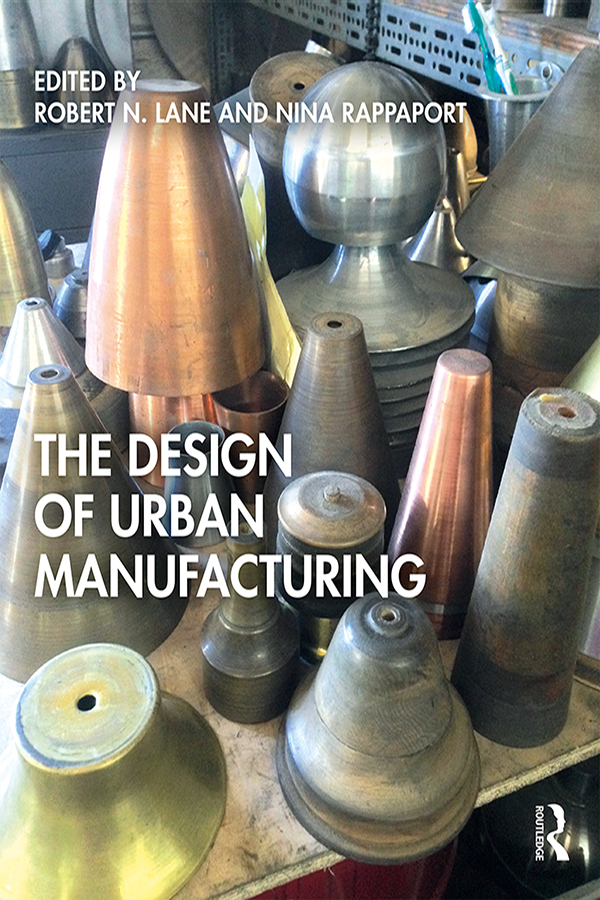These Seven Technologies Could Shape the Future of Manufacturing
Several new technologies may transform manufacturing, such as graphene, programmable magnets and Super Velcro.
Several paradigm changes have dramatically transformed the manufacturing landscape over the last few decades, including robotics, computers, composites, outsourcing and lean manufacturing. But, hold onto your mouse pads. Even more dramatic changes may be in store for engineers in the next few years, thanks to several new technologies that could affect the way many types of products are assembled.
The Society of Manufacturing Engineers (SME) recently unveiled a list of “Innovations That Could Change the Way You Manufacture.” Its annual compilation showcases emerging technologies that are making a difference in manufacturing, such as graphene, programmable magnets and Super Velcro.
“These are innovations that can be used today, or within a few months, and have already shown some successful implementation,” says Boris Fritz, engineer senior technical specialist in the materials and processes laboratory at Northrop Grumman Aerospace Systems and vice chair of SME’s Innovation Watch Committee, the panel of industry experts that selected the innovations.
Among this year’s innovations is graphene. The one atom thick sheet of carbon is lightweight and electrically conductive. Fifty times stronger than steel, graphene is being used for extremely sensitive sensors, super-fast electronic switches, aircraft braking systems and touch screens. Companies using graphene include Bell Helicopter and IBM. The material is available from companies such as Angstron Materials.
Another new technology, programmable magnets, may open the door to a wide variety of self-assembling applications. The ability to manipulate magnetic fields lends itself to many applications from precision switches to snowboard bindings to spinal implants. Using heat to erase a magnetic field, the material can be reprogrammed to have multiple north and south poles of differing strengths. The magnets are supplied by Correlated Magnetics.
Not all innovations on SME’s watch list are technical. For instance, the committee also recognized the Build to Demand (BTD) process as something that can change the way products are mass-produced. BTD, an alternative to the Toyota Production System, works well for manufacturers that experience variable demand and are seeking to increase customer service rates, while reducing inventories and production costs. Limited or no capital investment is required to implement BTD in most companies. John Deere’s Horicon Works originally developed BTD a decade ago with assistance from the University of Wisconsin-Madison.
Microstructured molding tools will impact manufacturers of products that could benefit from enhanced surface capabilities. Created as square or custom inserts for injection or compression molds, the innovation adds several capabilities to any molded product, such as superhydrophobic, reduced friction, reduced fluid drag and increased heat transfer. This approach reduces microstructure manufacturing cost by 83 percent to 98 percent. Developed by Hoowaki, microstructured tooling has been commercially available for one year.
Programming light with quantum dots is another innovation that promises to change the way things are manufactured. Quantum dots are nanoparticles of a semiconductor material that range from 2 to 10 nanometers in diameter. The ability to control the size of a quantum dot enables a manufacturer to determine the color of light emitted. Quantum dots are currently providing brighter images, lower power consumption and improved color purity for electroluminescent displays. Companies manufacturing quantum dot-enabled products include QD Vision and Weinberg Medical Physics.
Controlled through a Web-based application, a remote-presence robot allows a telecommuting worker to remotely attend meetings and collaborate with people in another office. With cameras in the eyes to capture video, speakers and microphones to relay sound and a laser pointer “finger,” the user can see what the robot sees and direct it around by using a computer’s arrow keys. Companies such as Procter & Gamble are using remote-presence robots to increase the efficiency of engineers collaborating on projects around the world.
Ten times stickier than Velcro and reusable gecko-inspired glues, Super Velcro is an extremely strong adhesive that comes apart when heated. Using shape-memory polymers, General Motors researchers have created a product that allows a strong but alterable bond that replaces liquid adhesives requiring lengthy oven curing, which consumes a lot of energy, or foam tapes that do not provide high adhesion strength. Super Velcro is currently being used for interior and exterior automotive trims, with potential applications for furniture, toys and buildings.
While reviewing submissions for the 2011 “innovations” list, the SME committee also created a list of technologies that “are showing great promise but, as yet, are unproven in the manufacturing setting.” This year’s list includes dip-pen nanolithography; green cement; large-format ceramic batteries; metamaterials, microreactor-assisted nanomaterials deposition; self-assembling vehicles; and synthetic cells.
“Because most people use common, everyday products that are frequently outsourced, they think that manufacturing in America is dead,” says Fritz. “Innovations like those identified [above] should be a reminder that American manufacturing has moved beyond the production of commodities and is one of the most technologically advanced sectors of our economy.”
Several paradigm changes have dramatically transformed the manufacturing landscape over the last few decades, including robotics, computers, composites, outsourcing and lean manufacturing. But, hold onto your mouse pads. Even more dramatic changes may be in store for engineers in the next few years, thanks to several new technologies that could affect the way many types of products are assembled.
The Society of Manufacturing Engineers (SME) recently unveiled a list of “Innovations That Could Change the Way You Manufacture.” Its annual compilation showcases emerging technologies that are making a difference in manufacturing, such as graphene, programmable magnets and Super Velcro.
“These are innovations that can be used today, or within a few months, and have already shown some successful implementation,” says Boris Fritz, engineer senior technical specialist in the materials and processes laboratory at Northrop Grumman Aerospace Systems and vice chair of SME’s Innovation Watch Committee, the panel of industry experts that selected the innovations.
Among this year’s innovations is graphene. The one atom thick sheet of carbon is lightweight and electrically conductive. Fifty times stronger than steel, graphene is being used for extremely sensitive sensors, super-fast electronic switches, aircraft braking systems and touch screens. Companies using graphene include Bell Helicopter and IBM. The material is available from companies such as Angstron Materials.
Another new technology, programmable magnets, may open the door to a wide variety of self-assembling applications. The ability to manipulate magnetic fields lends itself to many applications from precision switches to snowboard bindings to spinal implants. Using heat to erase a magnetic field, the material can be reprogrammed to have multiple north and south poles of differing strengths. The magnets are supplied by Correlated Magnetics.
Not all innovations on SME’s watch list are technical. For instance, the committee also recognized the Build to Demand (BTD) process as something that can change the way products are mass-produced. BTD, an alternative to the Toyota Production System, works well for manufacturers that experience variable demand and are seeking to increase customer service rates, while reducing inventories and production costs. Limited or no capital investment is required to implement BTD in most companies. John Deere’s Horicon Works originally developed BTD a decade ago with assistance from the University of Wisconsin-Madison.
Microstructured molding tools will impact manufacturers of products that could benefit from enhanced surface capabilities. Created as square or custom inserts for injection or compression molds, the innovation adds several capabilities to any molded product, such as superhydrophobic, reduced friction, reduced fluid drag and increased heat transfer. This approach reduces microstructure manufacturing cost by 83 percent to 98 percent. Developed by Hoowaki, microstructured tooling has been commercially available for one year.
Programming light with quantum dots is another innovation that promises to change the way things are manufactured. Quantum dots are nanoparticles of a semiconductor material that range from 2 to 10 nanometers in diameter. The ability to control the size of a quantum dot enables a manufacturer to determine the color of light emitted. Quantum dots are currently providing brighter images, lower power consumption and improved color purity for electroluminescent displays. Companies manufacturing quantum dot-enabled products include QD Vision and Weinberg Medical Physics.
Controlled through a Web-based application, a remote-presence robot allows a telecommuting worker to remotely attend meetings and collaborate with people in another office. With cameras in the eyes to capture video, speakers and microphones to relay sound and a laser pointer “finger,” the user can see what the robot sees and direct it around by using a computer’s arrow keys. Companies such as Procter & Gamble are using remote-presence robots to increase the efficiency of engineers collaborating on projects around the world.
Ten times stickier than Velcro and reusable gecko-inspired glues, Super Velcro is an extremely strong adhesive that comes apart when heated. Using shape-memory polymers, General Motors researchers have created a product that allows a strong but alterable bond that replaces liquid adhesives requiring lengthy oven curing, which consumes a lot of energy, or foam tapes that do not provide high adhesion strength. Super Velcro is currently being used for interior and exterior automotive trims, with potential applications for furniture, toys and buildings.
While reviewing submissions for the 2011 “innovations” list, the SME committee also created a list of technologies that “are showing great promise but, as yet, are unproven in the manufacturing setting.” This year’s list includes dip-pen nanolithography; green cement; large-format ceramic batteries; metamaterials, microreactor-assisted nanomaterials deposition; self-assembling vehicles; and synthetic cells.
“Because most people use common, everyday products that are frequently outsourced, they think that manufacturing in America is dead,” says Fritz. “Innovations like those identified [above] should be a reminder that American manufacturing has moved beyond the production of commodities and is one of the most technologically advanced sectors of our economy.”
Looking for a reprint of this article?
From high-res PDFs to custom plaques, order your copy today!









